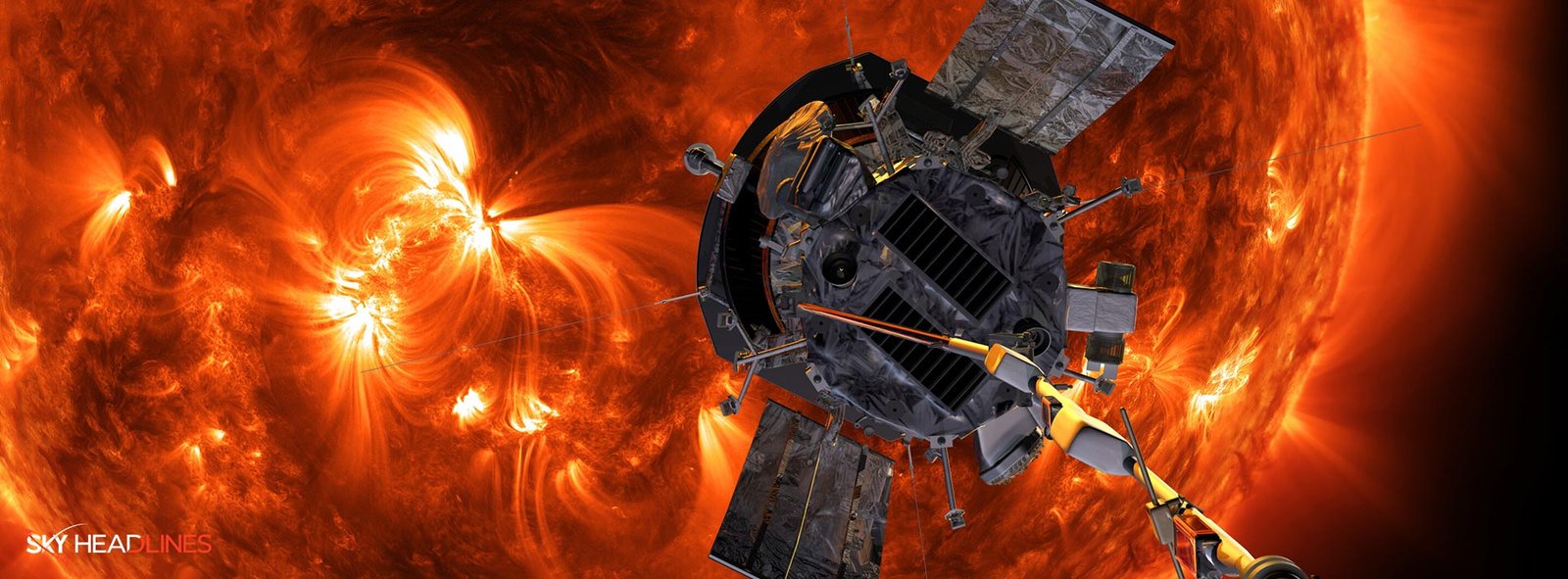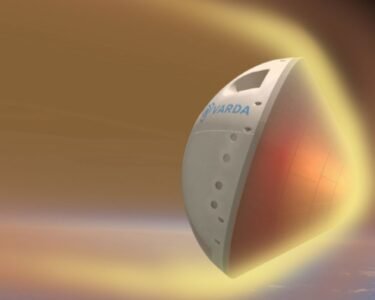“A Blessing in a Disguise”? How is it Possible?
Scientists may now be able to better forecast solar storms, which may supercharge auroras over our globe. But it may also destroy communication and electrical infrastructure and pose a threat to satellites, spacecraft, and even astronauts.
According to a recent research, the Parker Solar Probe follow the solar wind, which is basically a stream of charge particles that flows continually from the sun, and back to where it is form.
This allow researchers to see the properties of solar wind that are lost when it leave the sun’s outer atmosphere. Or corona, and before it reaches Earth as a rather smooth stream.
How the “Fast” Solar Wind has been Observed?
The satellite observed that the so-called “supergranulation flows” seen inside coronal holes. It match the streams of high-energy particles that make up the solar wind. The “fast” solar wind, which is observed over the sun’s poles. And it can travel at speeds of up to 1.7 million mph (2.7 million kph), or around 1,000 times. Which is actually really faster than the highest speed of a jet fighter. And it was found to originate from these areas.
When Coronal Holes Around the Sun’s Poles Can be Aimed at Our Planet?
Coronal holes are thought to arise where magnetic field lines emerge from the sun’s surface but do not return. This results in open field lines spreading to cover the region surrounding the sun.
Coronal holes are often discovered around the sun’s poles during calm times of our star’s 11-year activity cycle. This means that solar wind from coronal holes isn’t frequently directed toward Earth. However, when the sun’s magnetic field “flips,” flipping poles, these coronal holes grow more and these streams having charged particles can be aimed at our planet.
According to study team members, this information along with these new findings might assist in the forecast of potentially destructive solar storms.
A Team co-leader and University of Maryland-College Park professor James Drake said:
“Winds carry a lot of information from the sun to Earth. Our understanding of how the sun releases energy and generates geomagnetic storms, which endanger our communication networks, will be impacted by this.”
How Coronal Holes Spread Smooth Charged Particles Streaming?
According to team members, the coronal holes work like a showerhead, and they streams jets of charged particles from “bright spots” where magnetic fields stretch out from the sun’s surface. This creates funnels up to 18,000 miles (29,000 kilometers) wide, which are visible on Earth as brilliant “jet-lets” within coronal holes.
The Phenomenon of Magnetic Reconnection:
According to the study, when magnetic fluxes in different directions flow through these funnels, magnetic field lines split and then reunite. The process of ejecting the charge particles that we experience as solar wind is know as magnetic reconnection.
Only strong mechanisms like magnetic reconnection can answered for some of the discovered particles’ speeds. Which are up to 10 times faster than the average of solar wind. According to team members, such speeds are not achievable for particles just riding on plasma.
Photosphere & Supergranulation Movement: Let’s Understands with Bale’s Words:
According to Stuart Bale, a physics professor at the University of California, Berkeley:
“The larger-scale convection movement is known as supergranulation. The photosphere is covered by convection cells, much like a boiling pot of water. The photosphere is the surface of the sun.”
He added:
“Because it’s just jam, the magnetic field becomes very intense there. It’s like a magnetic field scoop going down the sink.”
“Where these supergranulation cells meet and go downward, they drag the magnetic field in their path into this downward kind of funnel.”
Bale went on to say that the researchers noticed the geographical separation of these small drains or funnels when they examined data collected as the Parker Solar Probe approached the sun.
“The big conclusion is that it’s magnetic reconnection within these funnel structures that’s providing the energy source of the fast solar wind.
“It doesn’t just come from anywhere in a coronal hole. It’s sub-structure within coronal holes and goes to these supergranulation cells. It is derive from these little bundles of magnetic energy linked with convection fluxes. Our findings, we believe, provide compelling proof that it is reconnection that is causing this.”
Why Studying the Solar Wind from Earth is Not Easy?
Studying the solar wind in fine detail is impossible from Earth. Because the stream has become a same flow of magnetic fields and charged particles such as protons, electrons, and helium nuclei. By the time it travels 93 million miles (150 million km) to our planet and strikes its magnetic field.
Let’s Have Some Background Details of Parker Solar Probe too:
Parker Solar Probe did launch on August 12, 2018. The spacecraft had made 15 near encounters to the sun as of March 17, 2023. And it is getting as close as 3.8 million miles (6.1 million km. Also, it is rushing past the star at speeds of up to 365,000 mph (587,000 kph). Parker is therefore able to approach near enough to view sol ar wind features before they are are unseen.
Bale, said:
“Once you get below that altitude, 25 or 30 solar radii [around 11 million to 13 million miles] or so, there’s a lot less evolution of the solar wind, and it’s more structured — you see more of the imprints of what was on the sun”.
Parker Solar Probe was so near to sun in 2021:
In 2021, the spacecraft came within 5.2 million miles (8.4 million km) of the sun surface. And racing through material jets rather than turbulence. The jets were track back to bunched-up magnetic fields and supergranulation cells on the photosphere by the scientists.
The team wasn’t clear if those charge particles were being driven by the slingshot-like action of magnetic reconnection. Or if they were surfing on waves of hot plasma from the sun at the time.
Alfven Waves:
The high energy status of the particles indicated to the scientists that the former process was in charge of accelerating the charged particles. Which were further aid by turbulence in the plasma know as Alfvén waves.
Bale said:
“Our interpretation is that these jets of reconnection outflow excite Alfvén waves as they propagate out. That’s a well-known observation from Earth’s magnetotail, where you have similar kinds of processes.”.
What we can predict in future about parker solar probe?
More data from the Parker Solar Probe when it approaches the sun within 4 million miles (6.4 million km) in the future. It might assist the researchers corroborate their idea. However, the fact that the sun is about to approach solar maximum – a period of chaotic and tremendous activity — may complicate matters.
Bale explained:
“At the start of the solar probe mission, there was some concern that we were going to launch this thing right into the quietest, most dull part of the solar cycle. But I don’t think we would have understood it otherwise. It would have been far too chaotic. I believe we were fortunate to launch it during the solar minimum.”





